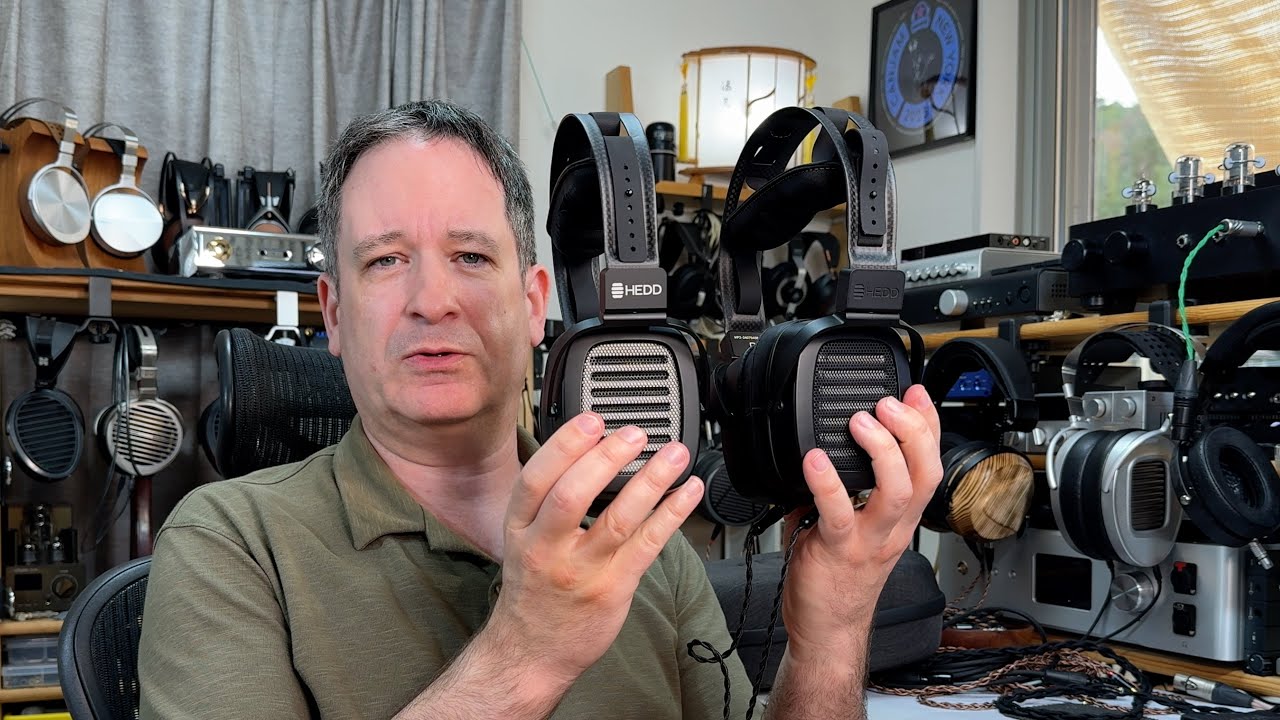For some time I have been interested in iFi’s products, though never made it around to reviewing them. After some discussion with the company, they offered to send me a Pro iCan for review, as I was keen to find out how well it handled all the high-end headphones I have here.
In stark contrast to my Studio Six, with its Braun-inspired minimalist intentions, the Pro iCan is loaded with knobs, switches and sockets. Also in great contrast, it is much smaller, its larger dimensions about enough to sit two Hugos on top. Part of that has to do with the large (15V 4A) external power supply which I connected via a Hosa adaptor directly into the back of my Power Plant Premier. iFi kindly supplies a list of voltage and current requirements should you wish to use another power supply.
Also supplied in the box is a basic remote control and a pair of RCA cables, as well as a link to Native DSD downloads. The RCA cables are something of a surprise, given that the amp is balanced. Handily the power supply is identical to that of the Pro iDSD and a single power supply will work with both units chained together, a DC loop out socket present for just this purpose.
Three RCA and one balanced XLR input set are provided on the rear, as well as RCA and XLR pre-amp outputs. A socket is also provided to link the iESL amp for electrostatic headphones.
The rear outputs are connected in tandem with the headphone sockets, including the gain settings, which resulted in my getting quite a surprise when I had the unit switched to +18dB and decided to listen with active monitors.

The front is extremely busy. A large input selector and a volume control dominate the extreme ends, then as you move in, the smaller knobs are for the XBass and 3D modes respectively. Below those are the controls for the amp mode (Solid State, Tube, Tube+) and gain (0, +9dB, +18dB).
Headphone sockets consist of a 4-pin XLR (now standard) and two Neutrik combo jacks which can be used as left-and-right 3-pin outputs or separate non-balanced 6.3mm outputs. Below those are non-balanced and balanced 3.5mm jacks, the latter using the HiFiMan-style pinout.
The outputs are clearly dated, given that dual-3-pin XLR outputs are now uncommon, and the 4.4mm Pentaconn is (hopefully) on its way to becoming the dominant standard.

From the basic set-up of solid-state amplification and other features turned off, the Pro iCan is able to tune the sound to one’s liking in a variety of ways. Starting with the tube modes, they respectively switch in a pair of General Electric 5670 tubes, with or, in Tube+ mode, without negative feedback. The latter is supposed to provide a slightly more euphoric sound at the expense of technical accuracy.
Switching between amplification modes didn’t change as much as I had expected. As the switch the flipped, the sound is cut off for a few seconds as the circuit is changed over and allowed to stabilise. If the solid state mode has been engaged for some time, the tubes will have been automatically shut off so some seconds are needed for them to warm up. The Tube + mode, which removes the negative feedback and results in a bit of even-order harmonic distortion results in a sound that is gently pleasurable. The solid-state mode was very dynamic but a touch hard-sounding to me. The middle tube mode struck a nice balance between those two.
The Pro iCan performed well in my system with both single-ended and balanced inputs. However, maybe as a result of the considerable quantity of electronics around my desk, with a single-ended source the Pro iCan picked up a bit of a hum, likely the result of a ground loop somewhere. After a lot of mucking about I gave up and moved and connected the Pro iCan via XLR to the Schiit Yggdrasil and left it at that for most of my listening.

In comparison with the other amps I have on hand, the Pro iCan is the proverbial versatile entertainer, great with the numerous tricks it can perform, if not quite the most detailed amp. I could twiddle the two smaller knobs, XBass and 3D to make the absolute-sounding Focal Utopias sound more spacious, but the other amps in my collection such as the big-iron ALO Audio Studio Six and Audio-gd Master 9 provided the more effortless and detailed delivery, the Pro iCan giving the more “Look at me!” presentation.
In comparison to the Pro iCan, the Soundaware P1 too seemed to extract a touch more detail while maintaining an even smoothness. As well, it can be switched between headphones and pre-amp mode. However it doesn’t have anything like the flexible options of the Pro iCan.
The Pro iCan was also behind the very over-built Audio-gd Master 9 when it came to detail retrieval. The Master 9 allowed me to discern the differences between the high-end DACs I have here, whereas the Pro iCan instead wowed with the dynamics of its sound and ability to tune bass and soundstage.
Where the Pro iCan shined the most was in its flexibility and ability to fine-tune the sound, improving on the presentation of headphones like the Utopias, which sound closed-in out of most amps. Combined with the Pro iDSD it made for enjoyable listening, even if the detail retrieval didn’t quite match that of similarly-priced amps.
If tube rolling were possible, and the pre-amp outputs could be switched off, it would make for an incredibly flexible amp.

The overall picture I was left with of the Pro iCan is that it is a powerful and flexible amp with a slew of options than can make the amp adaptable to listening with a wide variety of headphones and even IEMs. If a powerful sound and the extensive features are more important than extracting the last degree of detail, then the Pro iCan makes for a great amp.












